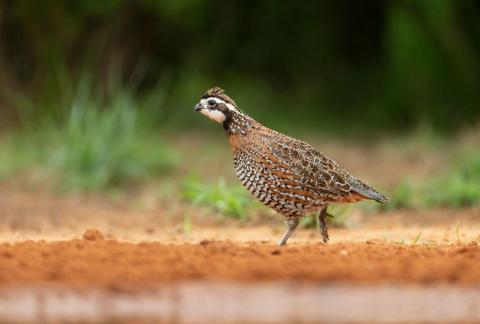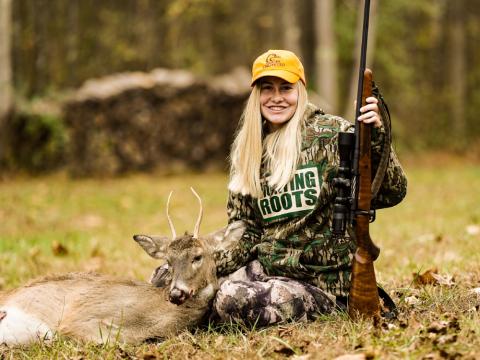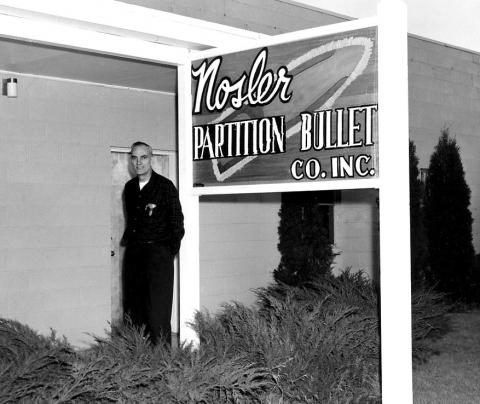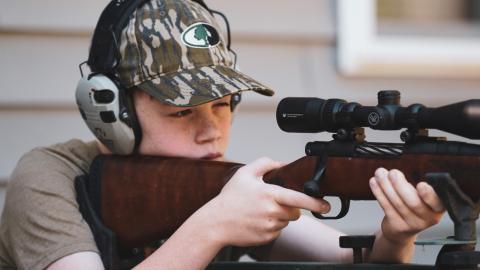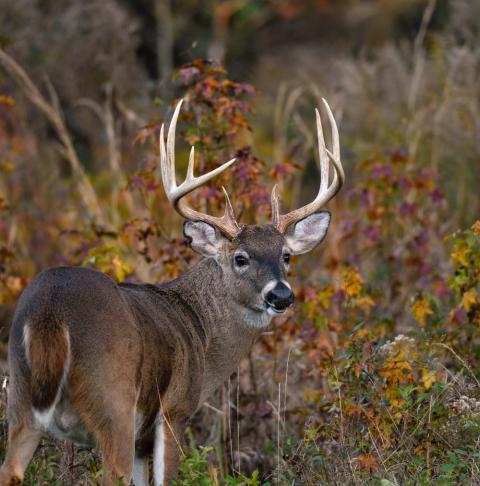This year you have planted food plots, hung stands, checked cameras, patterned your target buck and finally put him on the ground. Everyone is amazed by the deer antlers in the pictures you texted to them. The reply is always the same. “What does he score?” Unless you have scored a lot of trophy deer, the next thing you do is Google how to score a deer.
For some, learning to use a deer call properly is harder than measuring a deer’s antlers. For others, measuring a deer is too frustrating. The following steps can remove the frustration from scoring deer.

What is the minimum score to get into the record book?
Let’s be honest. The second thing you Googled was, “What is the minimum score to get into the record book?” If you used archery equipment, you are trying to get into the Pope and Young record book, and the Boone and Crockett record book if you used a firearm.
The Pope and Young minimum score for a typical whitetail is 125, and the non-typical is 155. The minimum score for a Boone and Crockett typical whitetail is 160, and the non-typical is 185. As you can imagine, making the record book is quite an honor, and there are scoring rules that apply. Let’s look a little further at scoring your buck.
Good to Know
There are a few things you should know before you get started:
- Measurements are all done to the eighth of an inch.
- Green score is a buck scored 59 days or fewer from harvest.
- Gross score is a buck’s score before deductions. This score is what most hunters use.
- Net score is a buck’s score after deductions. This net score is normally taken by a certified scorer
- You cannot get an official score until the rack is finished drying. Officially, that wait time is 60 days from the date you tagged the buck. At that point, an official scorer will measure him for you.
What do you need to score your buck?
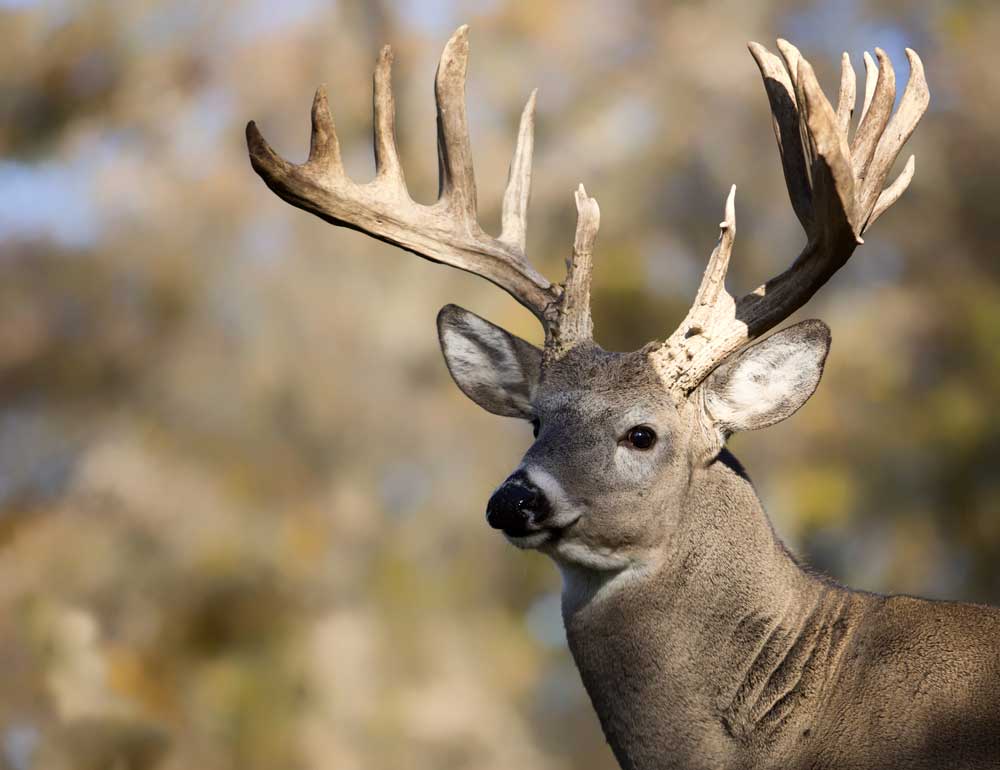
There are a few items you will need to measure your buck. It seems everyone has their preferred toolset and, eventually, you will too. Until then, here is what you need to get started:
1. Thin steel tape measure
2. Wire cable or paracord (a brake cable off a bicycle is not a bad choice)
3. Folding ruler with extension
4. Official Score Sheet either online or printed; there are separate score sheets for typical and non-typical; typical scoring deducts for measurement differences between left and right side while non-typical adds for it.
Let’s Get Started
1. First count how many abnormal points are on each side and record them on the right side of the Boone and Crockett score sheet.
2. Next, count points on each side and record them on row A.
3. Now it’s time to take length measurements. Measure the tip to tip spread across the front points and record it row B
4. Next measure the greatest spread. Usually, this is between main beams. If you have a kicker outside the main beam, you measure from there. Record on row C.
5. Next you measure the inside spread of the main beams and record on row D.
6. Next, measure the total length of abnormal points for each side. For point measurement, lay a tape measure across the main beam as if the point was not there. Make a mark in the center of the point where it branches from the main beam. Measure from the mark you made to the tip of the point. Add the total length of abnormal points for the right side together and then the total length for the left side. Record on row E for each side.
7. Next, measure the length of the main beam on each side. To measure properly, measure from the burr directly above the eye. Using your cable or paracord, start from the outside of the burr, stay outside of the main beam, working your way to the tip. Now measure the cable or paracord with your tape measure, and you’ll have the length of the main beam. Record on row F.
8. You will make the same mark for each point as you did for the abnormal point and measure G-1 through G-7 for each side. You may not have that many points; just measure and record what you have.
9. Now it’s time to take circumference measurements. You will ALWAYS take four measurements, and measurements should equal the smallest diameter you can find. First, find the smallest circumference between the burr and first point and record on H-1.
10. Repeat the measurement between the first and second point and so on. If you have an eight-pointer, you don’t have a place to measure between the fourth and fifth point. Measure halfway between the third point and tip of the main beam and measure there on both sides. You must have four circumference measurements.
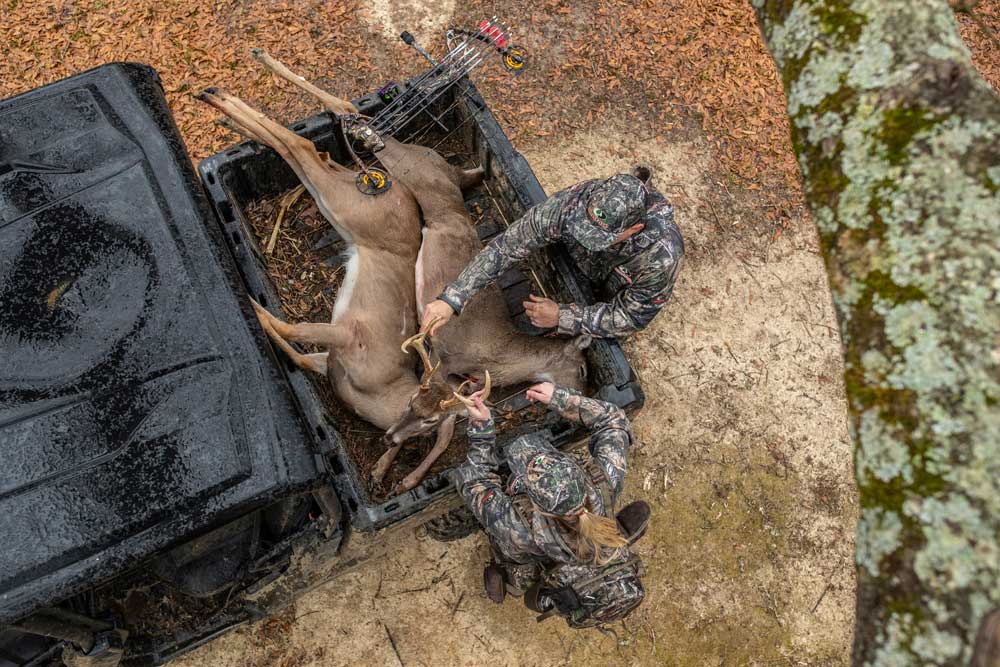
The Rest Is Math
You’re almost there. Let’s try to make the scorecard’s math easier to follow:
1. Add the measurements for columns one and two and record them in the totals for each column.
2. Next, on row E, subtract the column-one entry from the column-two entry and record the difference in column three. Repeat this for all the rows you have entries for and total column three.
3. Next, on the bottom left of the scorecard, you will see a row titled Add Together. Just to the left of that, enter the value of row D beside Spread Credit.
4. Below Spread Credit, enter the total from column one.
5. Below column one, enter the total from column two.
6. Now add Spread Credit value, column-one and column-two totals together for the subtotal, also known as the gross score.
7. Below the subtotal, you record the total from column three and subtract from the subtotal to get your net score. The net score is what is used to determine if you have a record book buck.
It’s as Easy as That
Every hunter scoring his buck will measure him several times to ensure every inch is accounted for. It’s not like you can practice on a deer decoy, so measure your deer several times to get the hang of it. Don’t hesitate to green score your buck; it will give you an idea what your buck will officially score. The number you text back to your buddies is between you and your conscience! The more you practice, the easier it gets and the more sense the score cards make.















